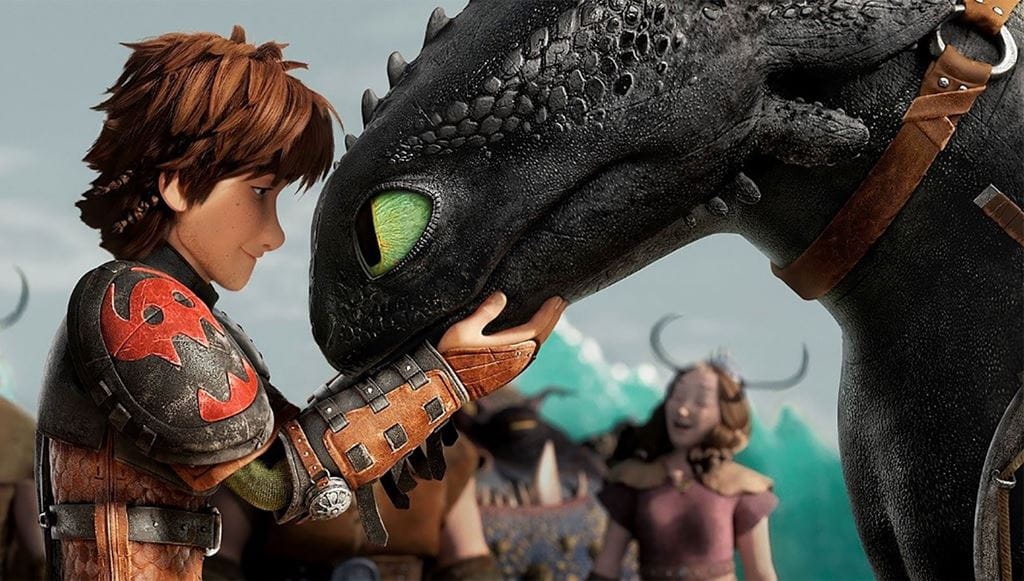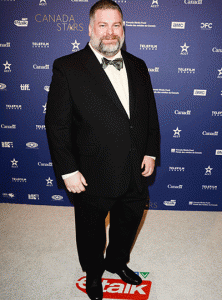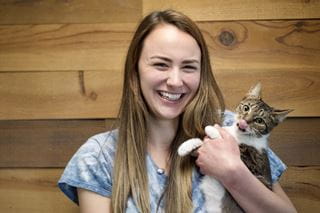
Two-time Oscar nominee at the helm of final film in trilogy
 by Carol Hill – Feb 20, 2015
by Carol Hill – Feb 20, 2015 Amid all the Oscar buzz for the animated feature How to Train Your Dragon 2, writer and director Dean DeBlois has his sights set on the third instalment of the trilogy. In fact, he is more than halfway through writing the final sequel in the award-winning series. “It will be the culmination of Hiccup’s coming of age, with both he and Toothless as chiefs of their respective tribes,” says DeBlois.

If the success of the first two is any indication – both were best animated film Oscar nominees – How to Train Your Dragon 3 will be a blockbuster. The news that Jay Baruchel, Gerard Butler and Cate Blanchett from the second instalment are slotted for the cast also bodes well for the final film.

But back when DeBlois started working on the original How to Train Your Dragon for DreamWorks in 2008 he wasn’t thinking about sequels. With a timeline of just 15 months until the film’s release date, DeBlois and director Chris Sanders had their work cut out for them. “We were definitely jumping in the deep end. It was our first CGI film and we had to learn on the go,” recalls DeBlois, who was tasked with reworking the entire script based on the book series of the same name. “We could keep the character names and the title but were encouraged to deviate from the books as much as we needed.” Although the books saw the Vikings and dragons in peaceful co-existence, DeBlois and Sanders thought there was more of an epic story to be told if Hiccup was the first Viking who befriended a dragon and brought an end to an age-old war.
The new story line proved a winner and DreamWorks had an Oscar-nominated hit on their hands. Not surprisingly, the studio was interested in a sequel. Sanders had returned to his work on The Croods, so DeBlois was writing and directing solo. “I found myself thinking of a trilogy, seeing that three connected acts could be part of one overall story,” says DeBlois.
“My work on the side earned me recognition as someone who could storyboard and write.”
Once How to Train Your Dragon 3 is released in June 2017 DeBlois will have spent nine years working on the trilogy. What will be next for him? Revisiting three live action film projects he developed for Disney and Universal years before, he says. The projects were shelved with a change in studio leadership – a hard lesson for DeBlois about the vagaries of the Hollywood film business.
Even before Oscar came calling in 2011 and 2015 DeBlois had amassed a winning record in his own right. He honed his skills at Disney on projects such as Mulan (with fellow Oscar-nominee and close friend, Chris Williams), however it was his efforts off the clock that truly put DeBlois on the radar. “I had been working on the side with Chris (Sanders) on Lilo and Stitch and was taking screenwriting classes. This is really what earned me recognition as someone who could write and storyboard.”
The duo soon found themselves writing their own screenplay for Lilo and Stitch. “Disney kept telling us they were going to hire a real writer,” says DeBlois, “but soon the story was so fleshed out that to bring in another writer would offset the unique voice the project had. So we became bonafide writers.”
“I never anticipated writing and directing films that are being recognized at this level.”
For DeBlois who grew up in Aylmer, Quebec just outside of Ottawa, his progression sometimes feels unbelievable. “As a student in Sheridan’s summer animation program, I thought the dream would be to work for Disney. I never anticipated writing and directing films that are being recognized at this level.”
Along the way, DeBlois has credited his Sheridan education with profoundly shaping his career and continuing to influence him, “My instructor Zack Schwartz always said, ‘If it reads as a postage stamp, it will read as a billboard,’ meaning that without a strong spine art becomes complicated and muddy. This is a powerful piece of advice that I still pass it along to people.”
DeBlois is now in a place where younger artists are interested in his counsel. “I remember how exciting it was to hear from industry professionals while I was at school. They become concrete examples of attainable dreams,” he recalls. “At this mid-point in my career while I still have heroes that I look up to, I realize that I also play a mentoring role. Yet, I am still close enough to my student experience to recognize how important it is to pass along my knowledge and inspiration.”
Written by: Carol Hill (retired), Editor, Ovation Magazine
Media Contact
For media inquiries, contact Sheridan’s Communications and Public Relations team.



